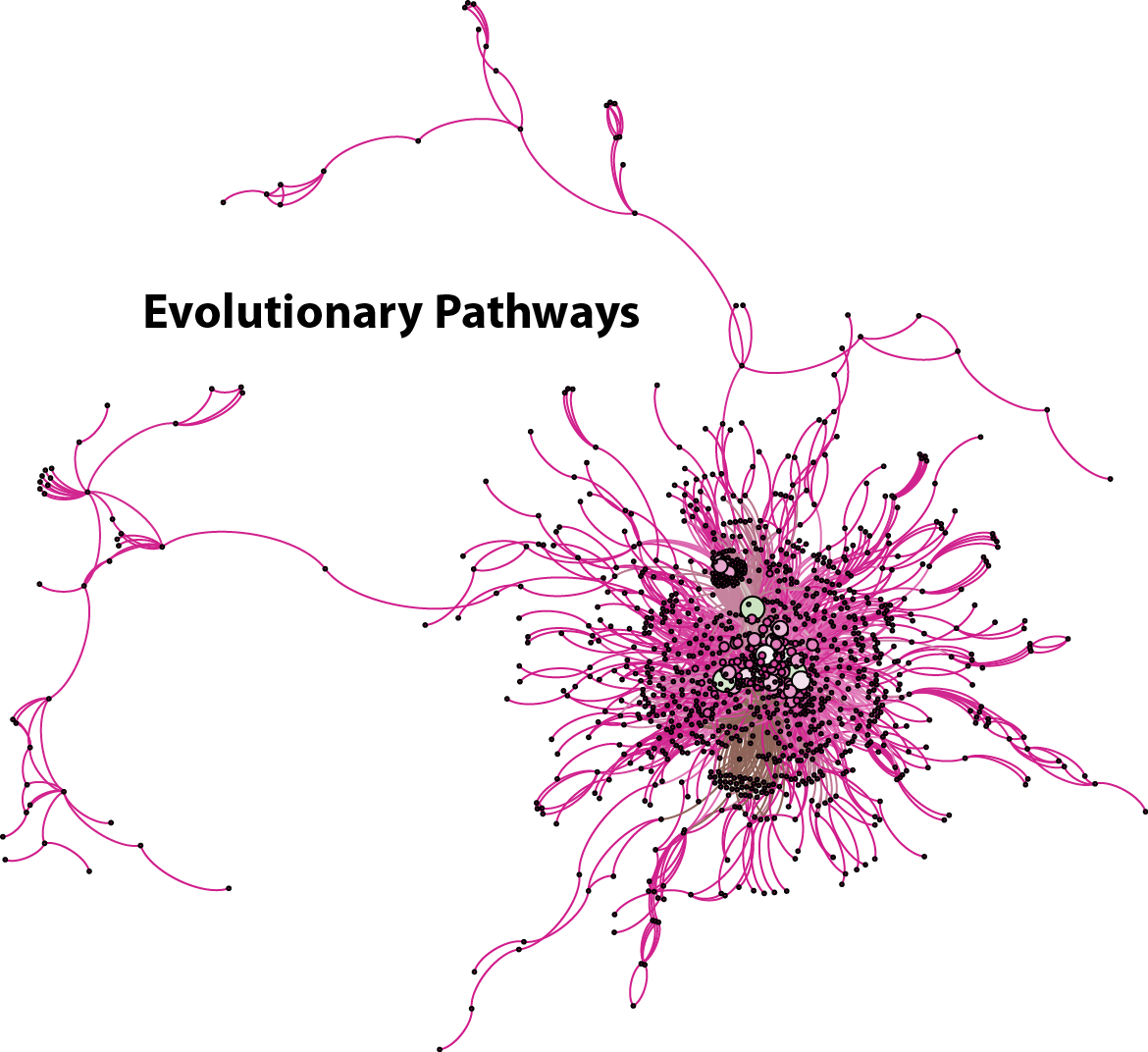
Evolutionary dynamics, pathways and mechanisms
While mutation is an intrinsically stochastic event, selection can steer the evolution of a particular species through many cycles of reproduction on a contrained subset of possible genetic permutations. We are currently focussing on viral drug resistance as a particular case of evolution, where the "steering" (selection pressure) is directly forced on the virus by antiviral medication. Although this situation is inherent to most microbial/viral infections, the mechanisms of drug resistance emergence are still poorly understood. While
drug treatment usually inhibits replication, and thus adaptation, it also induces selective
pressure, which could promote resistance. Thus, there is some threshold efficacy, which
promotes the selection of resistance D* and some threshold efficacy, which completely limits
replication and thus resistance emergence D+ . In particular, the actual efficacy of a drug/treatment D
would have to stay within the boundaries set by D* <= D <= D+ in order to allow for resistance
to develop and persist. Preliminary results show that this range is unrealistically small to
allow for some clinically observed resistance patterns to develop.
We therefore suspect that resistance emerges by a mechanism in which multiple
compartments are involved and "share" tasks to promote resistance.
Our preliminary results of HIV-inhibition by the drug class of nucleoside reverse transcriptase
inhibitors (NRTI) seem to support this hypothesis link ). Furthermore, we are currently exploring possible genetic constraints to resistance development to better understand how drug resistance can emerge clinically, and how it may be avoided.
